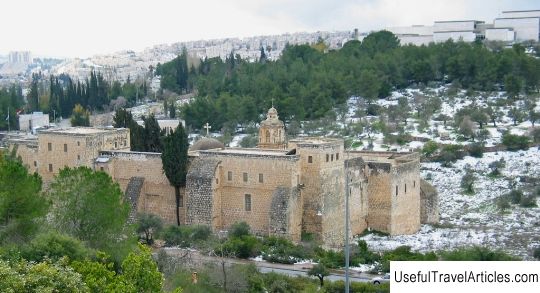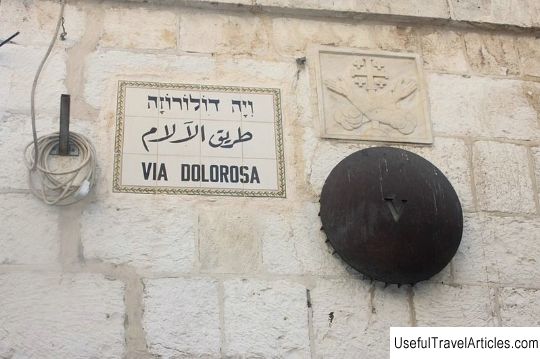Monastery of the Holy Cross description and photos - Israel: Jerusalem
Rating: 8,4/10 (7890 votes) 
Monastery of the Holy Cross description and photos - Israel: Jerusalem. Detailed information about the attraction. Description, photographs and a map showing the nearest significant objects. The name in English is Monastery of the Holy Cross. Photo and descriptionThe Holy Cross Monastery, associated with the name of Shota Rustaveli, is dear to every Georgian, but belongs to the Jerusalem Patriarchate (Greek Orthodox Church). It is located in the west of Jerusalem, between a wealthy residential area and government buildings. However, in ancient times it was a remote and secluded place. And very important for Christians - the tradition believes that it was here that a tree grew from which the cross was made for the crucifixion of Jesus Christ. The first monastery was built here in the 4th century - as the legend says, at the direction of Emperor Constantine. Later, both Persians and Arabs more than once killed monks and destroyed the building. A new monastery on the ruins was built in the 11th century by the Georgian monk Georgy Shavteli (money for the construction was given by the Georgian king Bagrat IV Kuropalat). And in the XII century, as many historians believe, the great Georgian poet, the author of the famous poem "The Knight in the Panther's Skin" Shota Rustaveli, appeared here. Most likely, he was an important official at the court of Queen Tamar. According to one version, he became a monk because of his hopeless love for the queen, according to another, more realistic, he came to the monastery to personally supervise its next restoration. It is believed that he was buried here, although there is no evidence of this. In the XIII-XIV centuries, the monastery flourished, monks gathered here - the best Georgian scientists and poets. However, by the 16th century, the monastery fell into decay. At this time, his financing from Georgia stopped, I had to sell part of the property (and they were once extensive), to go into debt. It was not possible to give them back - the Greek Orthodox Church, which has since owned the monastery, paid off the creditors. She opened it to the public. From a distance it looks like a fortress. It was built like a fortress, although this did not help: the monastery was conquered more than once, for some time there was even a mosque here. A 19th century bell tower in the Baroque style stands out behind the powerful walls. Typically, visitors can explore the courtyard, monks' cells, an ancient well, a former refectory with a long marble table, many antiques of monastic life, an impressive church with a stone vaulted dome. The mosaic floor in the church remains from the very first, Byzantine, monastery. They say that the dark spots embedded in the mosaic are traces of the blood of monks, slaughtered in the VIII century by the Arab crowd. A special room marks the place where, according to legend, the very Tree of the Cross grew (as the Apocrypha, planted and grown by Lot). On one of the columns, a fresco depicts Shota Rustaveli - this is the only surviving portrait of the poet. In 2004, it was barbarously damaged: the face and part of the inscription in Georgian were destroyed. Nobody was officially accused, but something like this happened here in the 20th century, when Georgian inscriptions on frescoes were erased and replaced with Greek ones.       We also recommend reading Sagrada Familia (Basilica de la Sagrada Familia) description and photos - Spain: Barcelona Topic: Monastery of the Holy Cross description and photos - Israel: Jerusalem. |




